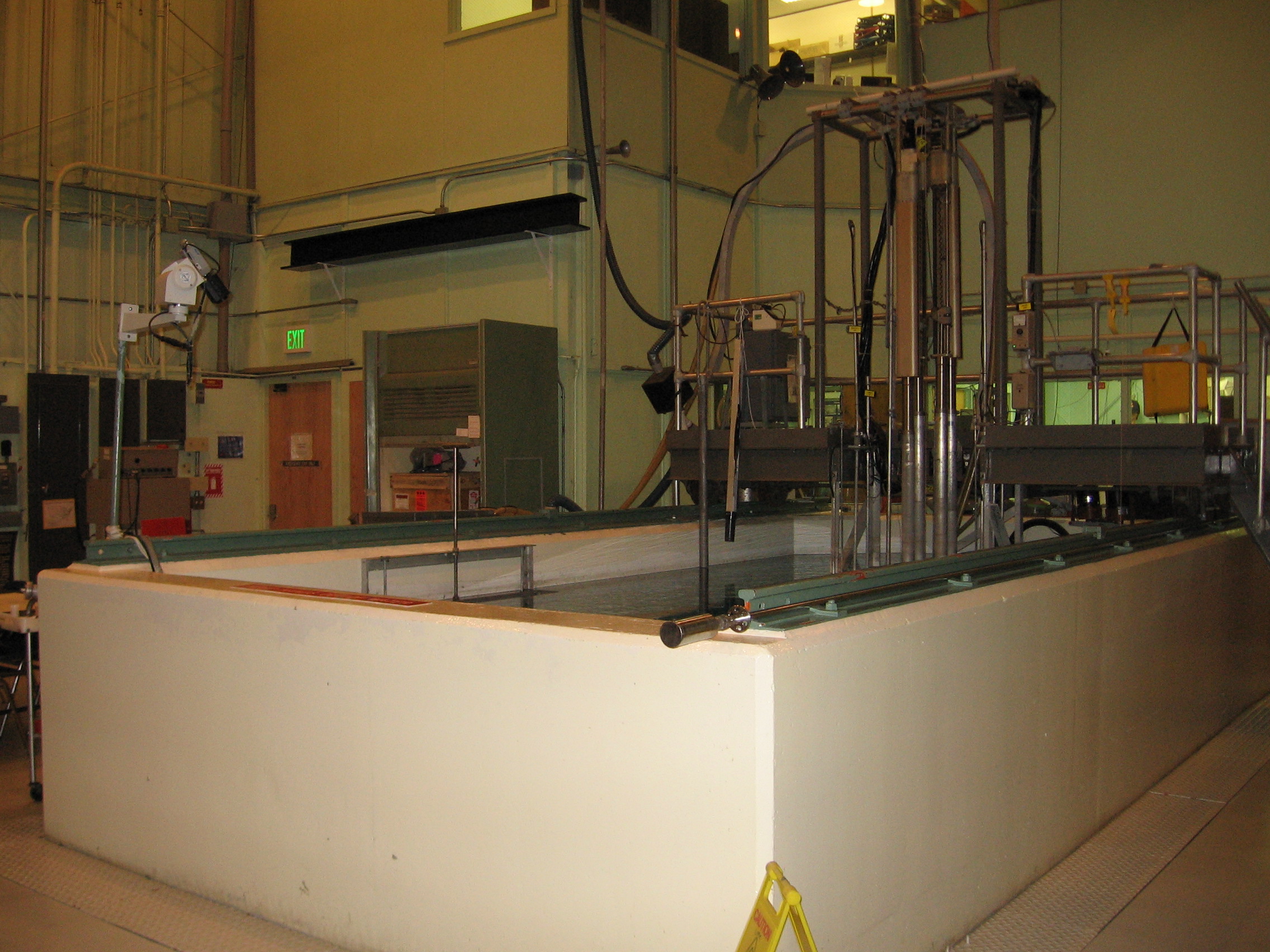.JPG)
About Us
Our Reactor
The Missouri University of Science and Technology (Missouri S&T) possesses a significant research and teaching facility in the Missouri S&T Reactor (MSTR). Originally licensed in 1961, the MSTR is a 200-kW pool-type research reactor. The reactor uses light water or light water/graphite (depending upon configuration) as a moderator and reflector with Materials Testing Reactor (MTR) plate-type fuel. Cooling is provided through natural convection of the pool water through the core, with evaporation of the pool water cooling the pool itself. The MSTR is based upon the Bulk Shielding Reactor and was the first reactor in the state of Missouri.
The MSTR license is held by the University of Missouri (UM) Board of Curators, while the reactor operates as a component of the Missouri S&T College of Engineering and Computing (CEC) and Nuclear Engineering (Nuc E) department. The facility license is current through 2029, as issued by the Nuclear Regulatory Commission (NRC).
The MSTR is utilized for education, training, and research, and puts forward a significant effort toward university recruitment and public outreach. The Nuc E department presents the primary faculty and student usage group, with academic research (undergraduate-, graduate-, and faculty-based) and laboratory classwork (e.g., Nuc E 4428–Reactor Laboratory I and Nuc E 4438–Reactor Laboratory II, required for all Nuc E undergraduates). Educational usage has also historically been high with the Chemistry department, in that virtually every student in introductory chemistry (Chem 1310, formerly Chem 1) participated in a reactor-based half-life lab between 2002 and 2015. Operations training, either for student operators or as part of classwork (Nuc E 2406/3406) is another large usage group.

Our Strengths
Uniqueness
As a research and training reactor, the MSTR is one of only 22 such facilities in the United States. In this capacity, the MSTR offers a unique and rare capability to conduct neutron activation, imaging, and gamma exposure-based experiments. Neutron activation analysis (NAA) has long been a staple of the facility operations with investigations usually focused on trace materials detected through non-destructive examination.
Student Operations
Per the MSTR Technical Specifications, any student may operate the reactor so long as they are supervised by a licensed reactor operator and the core is placed in a low reactivity configuration. The ability to allow virtually any student to operate the reactor greatly expands the teaching capabilities, both from an operations training and an experiential learning perspective.
The presented strength is further expanded with reactor operator training and licensing. The facility maintains a training program of approximately 5-10 students, who actively pursue their license through hands-on operation time and training sessions.
